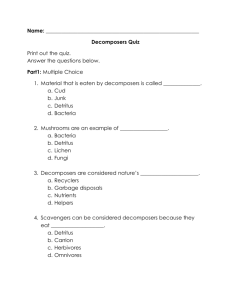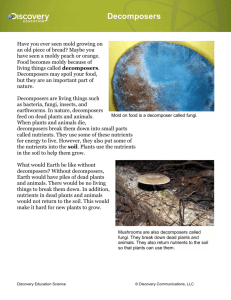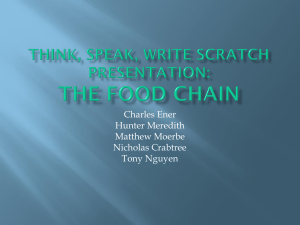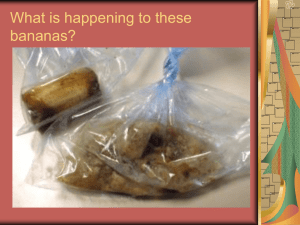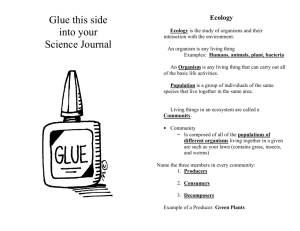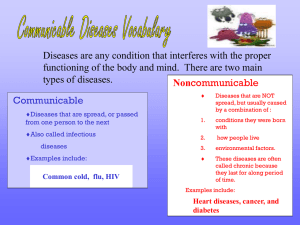Fungus Among Us Pre-visit - Eagle Bluff Environmental Learning
advertisement
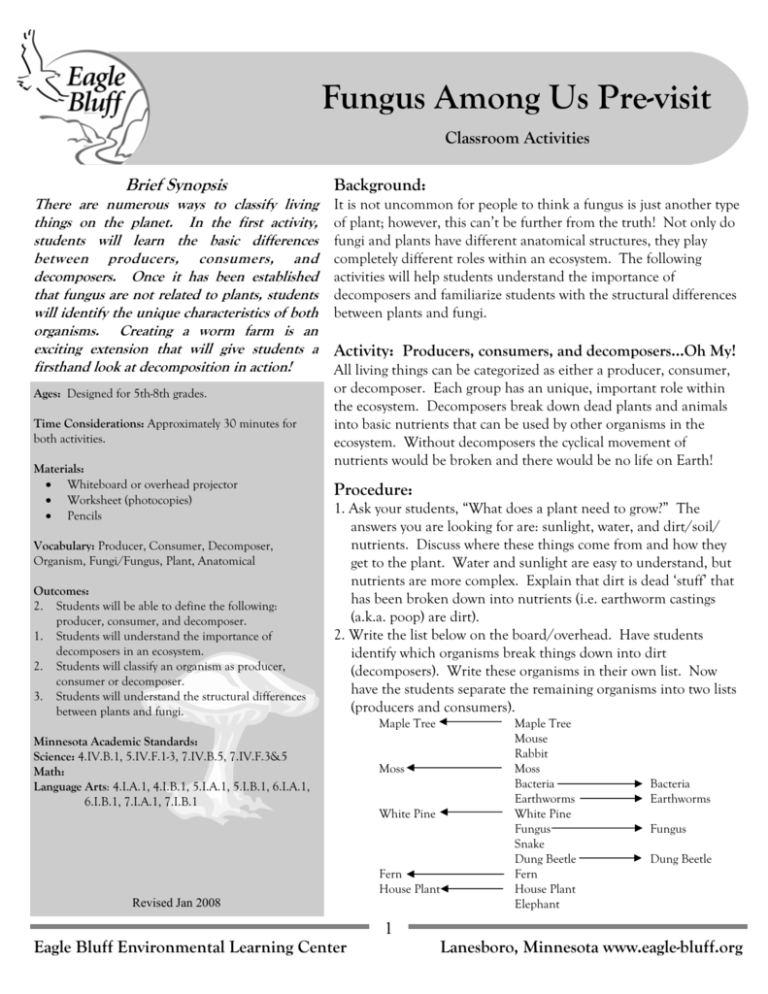
Fungus Among Us Pre-visit Classroom Activities Brief Synopsis There are numerous ways to classify living things on the planet. In the first activity, students will learn the basic differences between producers, consumers, and decomposers. Once it has been established that fungus are not related to plants, students will identify the unique characteristics of both organisms. Creating a worm farm is an exciting extension that will give students a firsthand look at decomposition in action! Ages: Designed for 5th-8th grades. Time Considerations: Approximately 30 minutes for both activities. Materials: • Whiteboard or overhead projector • Worksheet (photocopies) • Pencils Vocabulary: Producer, Consumer, Decomposer, Organism, Fungi/Fungus, Plant, Anatomical Outcomes: 2. Students will be able to define the following: producer, consumer, and decomposer. 1. Students will understand the importance of decomposers in an ecosystem. 2. Students will classify an organism as producer, consumer or decomposer. 3. Students will understand the structural differences between plants and fungi. Background: It is not uncommon for people to think a fungus is just another type of plant; however, this can’t be further from the truth! Not only do fungi and plants have different anatomical structures, they play completely different roles within an ecosystem. The following activities will help students understand the importance of decomposers and familiarize students with the structural differences between plants and fungi. Activity: Producers, consumers, and decomposers...Oh My! All living things can be categorized as either a producer, consumer, or decomposer. Each group has an unique, important role within the ecosystem. Decomposers break down dead plants and animals into basic nutrients that can be used by other organisms in the ecosystem. Without decomposers the cyclical movement of nutrients would be broken and there would be no life on Earth! Procedure: 1. Ask your students, “What does a plant need to grow?” The answers you are looking for are: sunlight, water, and dirt/soil/ nutrients. Discuss where these things come from and how they get to the plant. Water and sunlight are easy to understand, but nutrients are more complex. Explain that dirt is dead ‘stuff’ that has been broken down into nutrients (i.e. earthworm castings (a.k.a. poop) are dirt). 2. Write the list below on the board/overhead. Have students identify which organisms break things down into dirt (decomposers). Write these organisms in their own list. Now have the students separate the remaining organisms into two lists (producers and consumers). Minnesota Academic Standards: Science: 4.IV.B.1, 5.IV.F.1-3, 7.IV.B.5, 7.IV.F.3&5 Math: Language Arts: 4.I.A.1, 4.I.B.1, 5.I.A.1, 5.I.B.1, 6.I.A.1, 6.I.B.1, 7.I.A.1, 7.I.B.1 Maple Tree Moss White Pine Fern House Plant Revised Jan 2008 Eagle Bluff Environmental Learning Center 1 Maple Tree Mouse Rabbit Moss Bacteria Earthworms White Pine Fungus Snake Dung Beetle Fern House Plant Elephant Bacteria Earthworms Fungus Dung Beetle Lanesboro, Minnesota www.eagle-bluff.org Fungus Among Us Pre-visit Classroom Activities (continued) 3. Label each of the columns with its proper title: Producer, Consumer, or Decomposer. Then have the class create a simple definition for each category. PRODUCER Maple Tree Moss White Pine Fern House Plant CONSUMER Mouse Rabbit Snake Elephant Teacher Tips DECOMPOSER Bacteria Earthworms Fungus Dung Beetle Sample definitions: Producer- an organism that makes its food. Consumer- an organism that must eat something else to get energy. Decomposer- an organism that breaks dead matter down into basic nutrients that can be used by the rest of the ecosystem. Activity: Fungi ≠ Plants As established in the previous activity, Fungi are decomposers NOT producers. Because they are completely different organisms, they have different structures. In this activity, students will familiarize themselves with the anatomical differences between fungus and plants. • ‘Fungus’ refers to a singular organism, while ‘Fungi’ is plural. • A tree is a perennial woody plant. Any vascular plant with an above ground stem, bark, and survives one year to the next is considered a ‘woody’ plant. The term ‘perennial’ refers to plants that live more than two years. • Bringing your students outside to find and identify producers, consumers, and decomposers will be a fun way to expand on activities done in the classroom. • If possible, bring edible mushrooms and a plant into the classroom and have the students identify similarities and differences between the two. Procedure: 1. Handout the “Fungi ≠ Plants” worksheet to students. 2. Have the students complete the worksheet by writing the proper term in the correct location. All words for labeling both the fungi and plant are located, in no particular order, in the word bank. The number of hashes in the line does correspond to the number of letters in the correct word. 3. As a class, check answers and compare/contrast the anatomical structure of plants and fungus. Additional Resources http://www.enchantedlearning.com/subjects/ plants/plant/ An in depth look at the anatomy of plants, including a glossary of terms. http://www.qrg.northwestern.edu/projects/ marssim/simhtml/ Extension Options: Create your own worm farm! Worms are great decomposers and their work is quickly done. A fully functioning worm farm can turn organic waste into dirt at a quick pace. Not only does this reduce the amount of stinky garbage in a trash bin and create nutrient rich soil for the garden, it will help students understand why these invertebrates (and other decomposers) are a vital part of life here on Earth! Eagle Bluff Environmental Learning Center 2 This website provides basic explanations and pictures of: herbivores, plants, omnivores, carnivores, decomposers, and pollinators. http://www.planetkids.biz/documents/ How_to_Build_Your_Own_Worm_Farm.pdf A detailed guide to building a functioning worm farm. Lanesboro, Minnesota www.eagle-bluff.org
